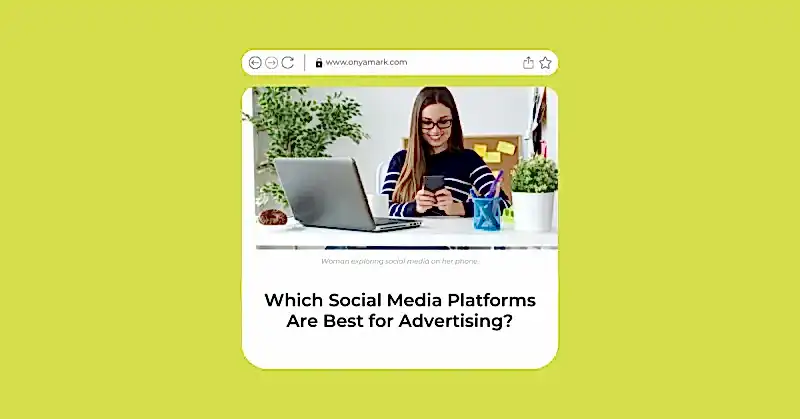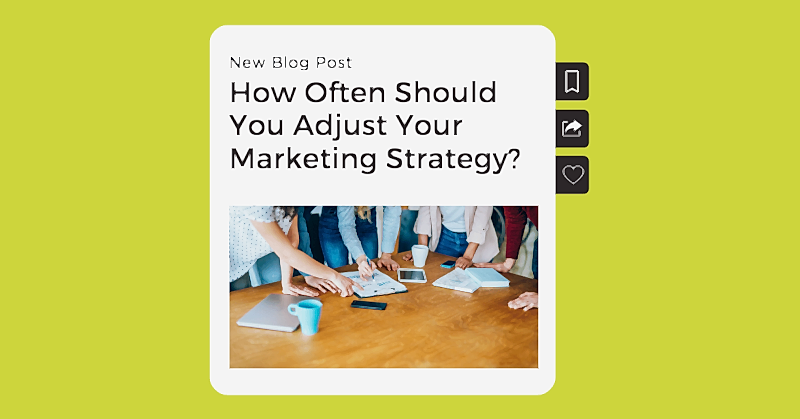Every year there’s more reason to invest in social media. New networks are rising in popularity and companies are announcing new features, tools, and apps. Especially considering the integration of eCommerce into social media activity, making it an integral piece of any digital strategy. There are many networks to choose from, so deciding which one to invest in requires careful planning and evaluation of the strengths and limitations of each.
Lucky for you, we did the work to determine which platforms are the best to invest in. At a high level, these are the best social networks to invest your ad money in 2023:
- YouTube

Considered the daddy of all social networks − with over 2.7 billion users, Facebook provides massive reach to the most diverse audience on the internet. The chances of reaching your ideal customer are huge no matter how niche or specialized your business is.
However, as a result of this popularity, the competition and CPMs will be higher on Facebook than on other platforms. Set clear goals for your ads, supported by a data-driven strategy. This will help you stay on top. For most, we recommend taking advantage of Facebook’s audience targeting capabilities to make sure your ads reach the right users.
Facebook offers a diverse range of ad placements and formats:
- Carousel Ads
These consist of multiple images in a series that users can scroll through. They work best for displaying products that have more than one visual component. - Slideshow Ads
A great substitute if you don’t have any video assets. They are made up of 3 to four images that cycle in one ad. - Collection Ads
Full-screen format and best for promoting a product line or a series of merchandise. - Facebook Dynamic Ads
Customized ads through machine learning that allow you to reach your desired audience. - Facebook Instant Experiences
These comprise multiple media formats, including one video, a series of images, and text. Its multi-media composition, speedy load times and interactive UX delivers a brand experience you can’t really get anywhere else.

This platform is owned by Facebook and has many of the same benefits and capabilities. It has extensive reach, a wealth of data to reach the right type of user, and is the fastest growing of all the networks with a younger target audience.
Instagram is all about compelling visuals. Users show more interest in user-generated content and digital media compared to Facebook, where direct communication is favored. Images posted on Instagram get 23% higher engagement rates than on Facebook.
Also, Instagram differentiates itself from Facebook with Instagram Stories which are a series of short narratives displayed in photos and videos. The 15-second run time is ideal for keeping users engaged. Users can participate in audience polls, provide feedback with instant emojis and chat stickers, and shop for products by simply swiping up or tapping on a tagged product.
You can also advertise in the “Explore” area of the Instagram homepage. This is a great option for those that want to get in front of people looking for new brands to follow. The Explore ad links to the advertisement post on the brand’s page where the user can access the brand website or make a purchase directly through the Instagram shopping app.

Pinterest is unique among social platforms because its users are mostly going there to discover new products, and they respond well to ads. It offers a mix of free and paid advertising tools, and combining both can earn you 3x more conversions and twice the ROI on your ad spend, versus paid ads alone.
Pinterest has 5 advertising types:
- Promoted Pin
Promoted Pins appear in users’ feeds like a regular Pin, except they have a “promoted” tag attached to them. When you run ads, you’ll boost your Pin’s exposure and reach people most interested in what you offer. Since people can Pin these posts to their boards and share them with friends, you can get in front of an even wider audience. - Promoted Carousel
This format is one of the Pinterest ad options where you can have more than one photo. These ads also appear like regular Pins, except they have dots along the bottom to indicate multiple photos in a Pin. With Promoted Carousel ads, each card on the slide can feature a unique image, title, description, and landing page. It makes it easy for you to promote multiple similar products in one place, so people can see all you offer. - Promoted Video Pins
The only difference between this ad option and the others is that the multimedia used is a video. When users come across your Promoted Video Pins, the ads will automatically start playing once they’re halfway into the user’s view. These ads don’t have sound, so you need to catch your audience’s attention and get the point across with just your video. - Promoted App Pins
As the name suggests, you can use these pins to promote your business’s app. With this ad type, you set up a Pin that links to your app in the app store. When users click the Pin, it takes them directly to your app’s listing in the device’s app store and invites them to download it. - Buyable Pins
These Pins enable people to shop straight from the Pins you post. On these posts, users will see white dots highlighting different products in your Pin picture. They can then click on these dots and visit your page where you have the product listing.

With over 500 million members, LinkedIn is the most popular professional network. Its high-value audience and career-minded users make it an essential channel for B2B brands. What sets it apart from other social networks is that users are more likely to update their profile information. This means that data used to target audiences is more reliable and accurate.
LinkedIn enables some of the most granular targeting available on the web, so you can narrow your audience down to the exact decision-maker or buyer. You can target by location, job title, industry, company, demographics, education, employment history, or interests. With LinkedIn’s Matched Audiences, brands can target users from uploaded contact lists or create audiences based on interactions with their social content or website.
Here are the available ad options for LinkedIn:
- Message Ads achieve impressive engagement rates because of the direct placement inside users’ inboxes. Since this is a direct communication technique, we recommend serving this to individuals who are already aware of your company.
- Text Ads are exactly what they sound like–ads consisting of hyperlinked text to the brand’s website with a brief description and a company logo or other image next to it.
- Newsfeed Ads are standard sponsored ads with a native look and feel. They appear on the feed like organic posts.
- Dynamic Ads automatically pull users’ profile information to personalize and contextualize the messaging, creating effective one-to-one communication. Ads with users’ profile pictures, names, and job titles will certainly grab some attention.

YOUTUBE
YouTube is the world’s second-largest search engine and social network with 2 billion active monthly users. It’s also the largest video-sharing platform to date. Since YouTube ads are not usually a direct response tactic, you may not see a monetary impact right away. But, if your video ads are clever and create emotional connections with consumers, YouTube can be the most effective method to generate a positive brand image.
YouTube offers TrueView, Pre-Roll, and Bumper ad placements:
- TrueView is an ideal placement if you are looking for inexpensive ways to generate site traffic. YouTube only charges for impressions that result in a click or a video view. There are two types of TrueView ads:
- In-stream ads are skippable ads played before a video begins. Make sure to show the most enticing part of the ad in the first five seconds since the viewer can skip the ad after 5 seconds. This type of ad charges for each view longer than thirty seconds or for any CTA clicks.
- Discovery ads appear in search results on the YouTube home page or as a related video on the right-hand side menu where recommended videos appear. These charges per video click.
- Pre-roll ads are non-skippable videos played before, during, or after a selected YouTube video plays, and are generally 15 – 20 seconds long. You are charged per click for this type of ad, guaranteeing a base level of engagement from your ad spend.
- Bumper ads are six-second non-skippable ads played before a YouTube video. These ads have the shortest duration available. You can use this space to summarize the main selling points of your campaign in just a few seconds with guaranteed views.
Taking a closer look at these different social networks should help you understand which network is best for your business objectives. Remember that each platform requires its own dedicated strategy. An ad created for Facebook won’t work in quite the same way on LinkedIn. Everyone consumes information differently and each platform reveals its own insights into user behavior.
Onya is always here to lend our expertise in paid social strategies. Contact us today and get started!








